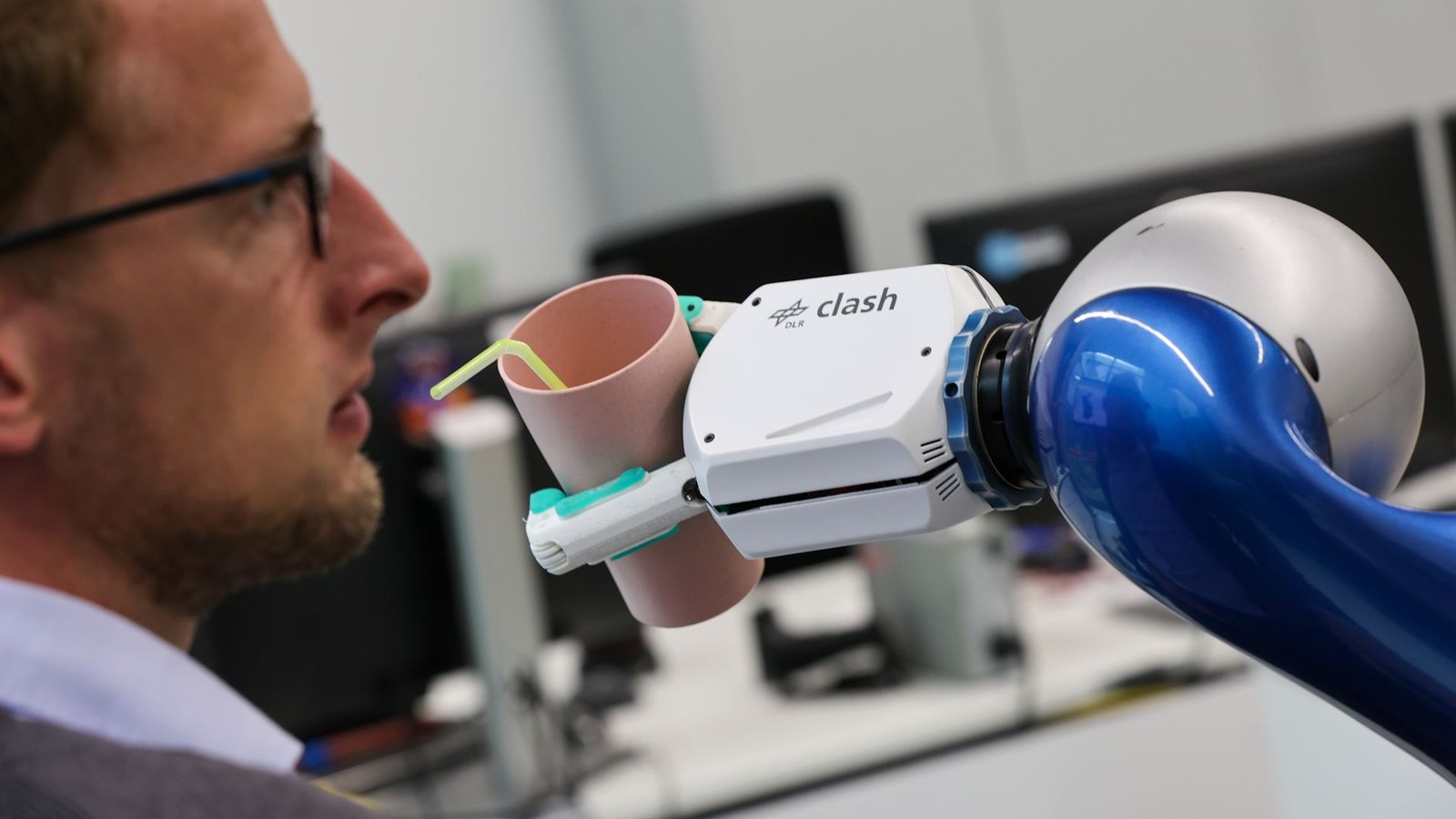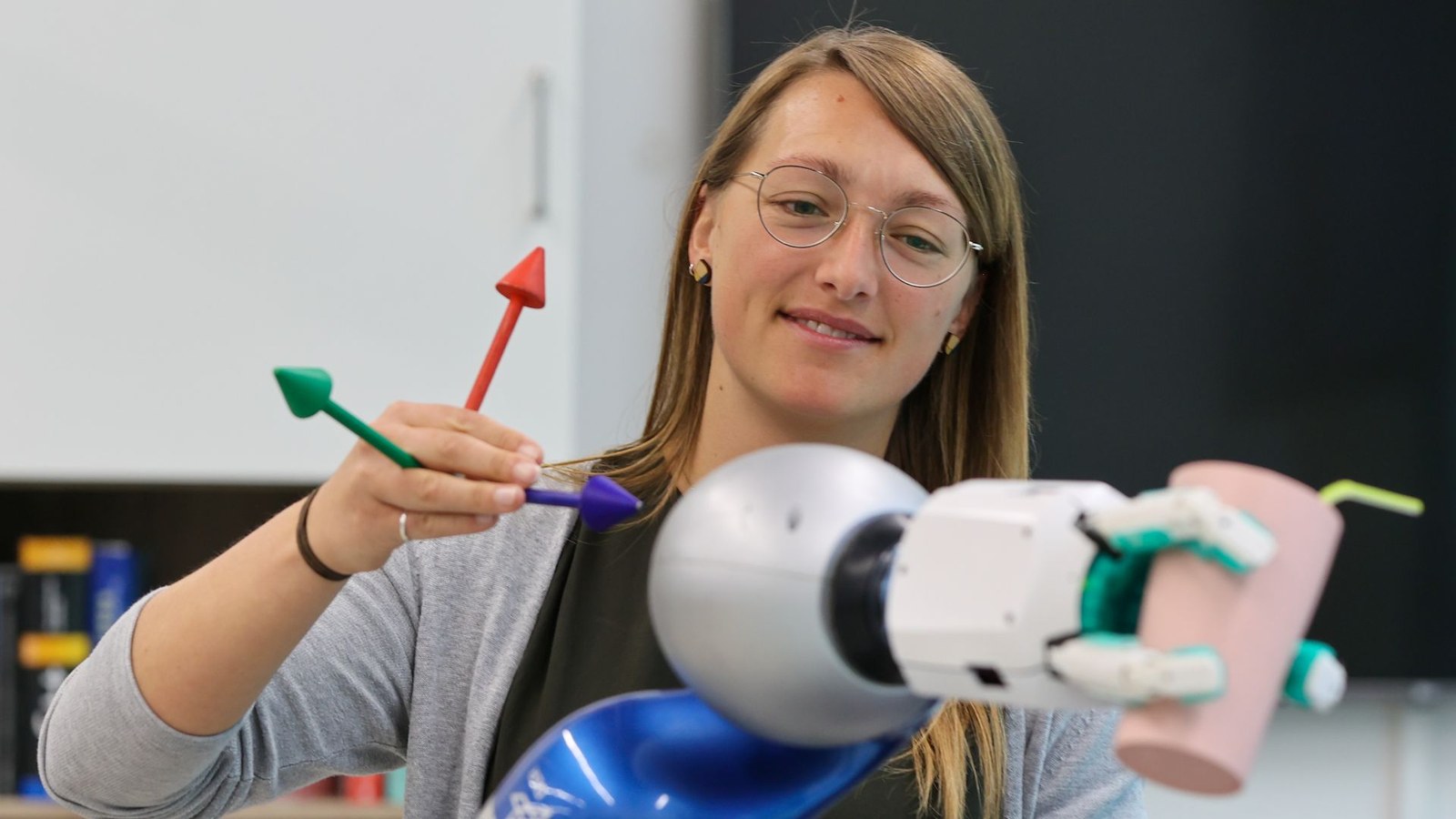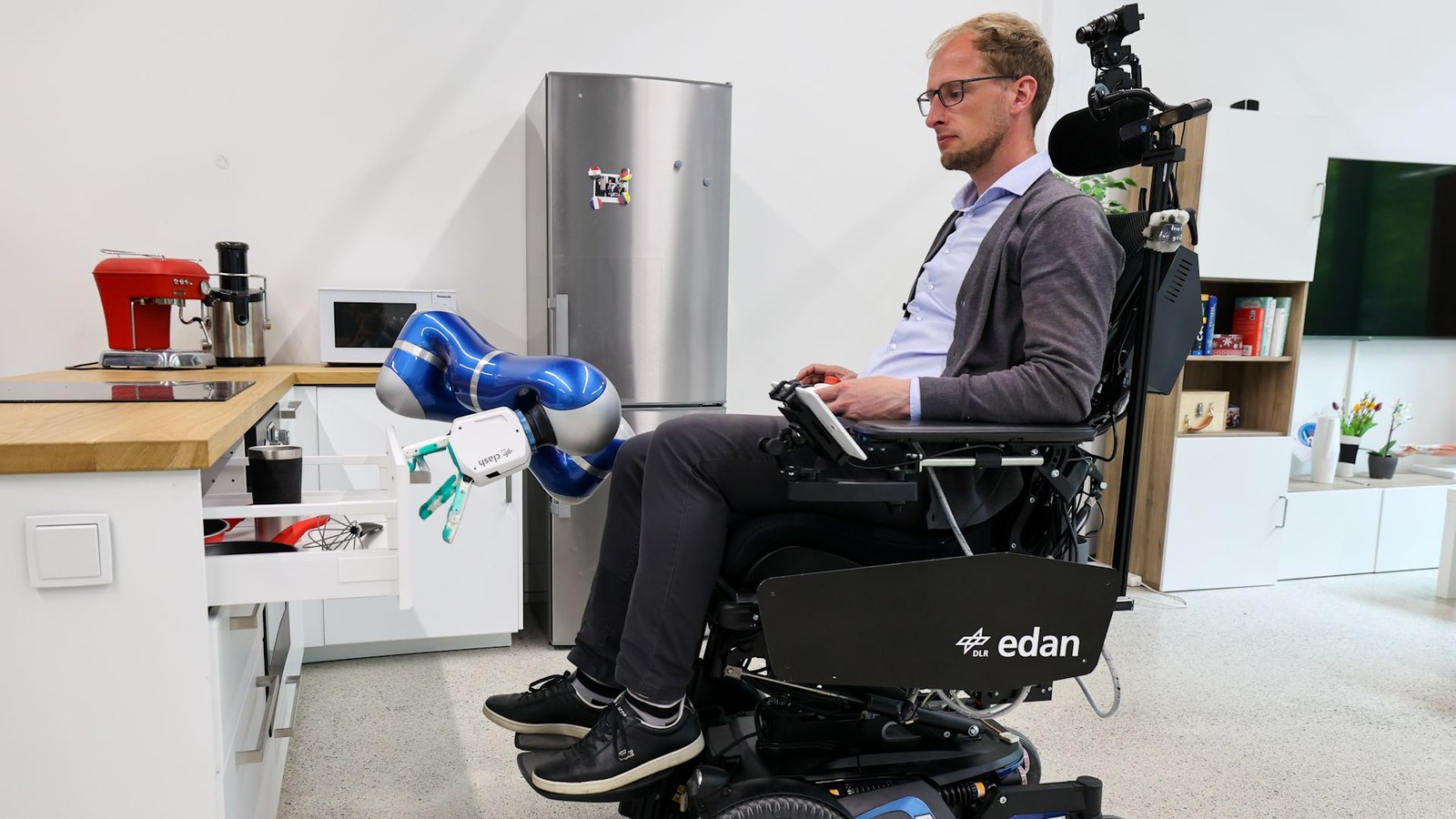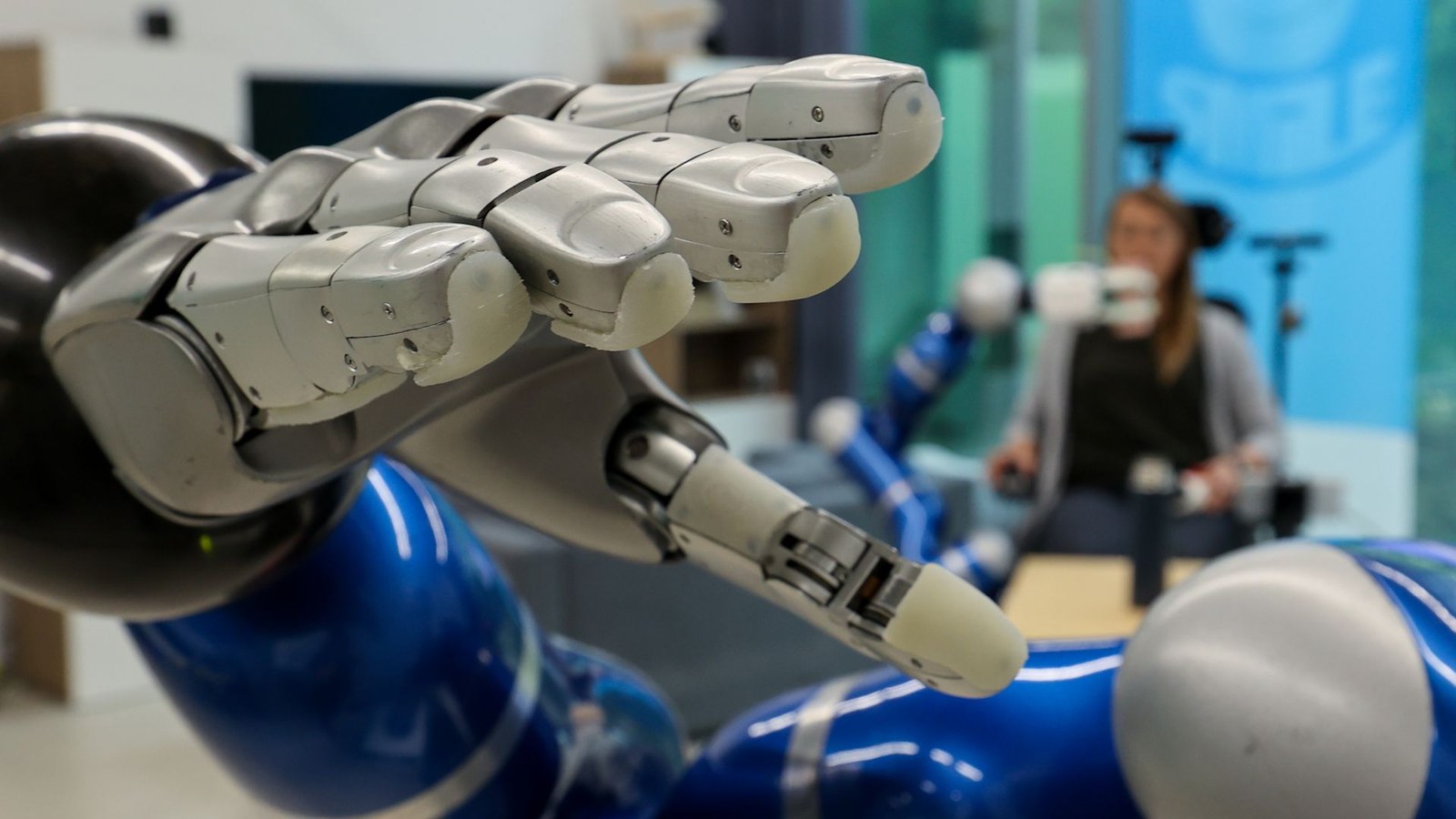Sensitive robotic assistance systems
Imagine picking up a jug, pouring the liquid into a cup and bringing it to your lips. You would make those movements intuitively, without having to give them much thought. You simply hold the jug over the cup, tilt it gently and watch the coffee run into it. The gestures required to drink from the cup happen almost automatically, too. Yet these and other everyday activities, such as opening doors, can be extremely difficult for people with motor impairments.
Jörn Vogel and Annette Hagengruber of the DLR Institute of Robotics and Mechatronics and their team are equipping a wheelchair with a robotic arm that has its origins in space research, with a view to restoring some of this independence. Known as the EMG-controlled daily assistant (EDAN), this mobile robotic system can assist users by reaching for bottles, cups and door or drawer handles. A small black box with electrodes attached to the user's skin gauges any muscle activity and converts these signals into movements to be performed by the wheelchair and the robotic arm.
Safe teamwork between human and machine

The wheelchair can also assist the user by carrying out actions independently. “If the robotic hand comes close to the bottle, for instance, EDAN will recognise this and initiate the right gripping movement,” explains DLR engineer Jörn Vogel. “But the patient remains in control and can stop the sequence at any time.”
This is vital when people and machines are working together to ensure that the user always feels safe. “We have also programmed a defined space around the person that the robotic arm cannot enter,” adds engineer Annette Hagengruber. In the event of unexpected contact with the robotic arm, it becomes tractable and terminates its current action. This precludes the risk of any injuries caused by a clumsily controlled robotic arm.
Cross-disciplinary teamwork
But it is not as simple as it sounds. During tests in the laboratory, the coffee didn’t always end up in the cup; sometimes it would splash out onto the table alongside it. Although the technology had a 95 percent success rate, it must work even more reliably to be used in everyday life. Together with an interdisciplinary team, Hagengruber and Vogel are now working to make the assistant robot intelligent enough to recognise objects and their function, imitate the movements of the human body as precisely as possible and orient itself spatially without any issues.

“We are developing a holistic approach for intuitive cooperation between humans and robots,” says Vogel. The EDAN team brings together computer science, mechanical engineering and medical engineering: Jörn Vogel studied engineering computer science with a focus on mechanical engineering, while Annette Hagengruber studied medical engineering. DLR also has the advantage that other experts are working right next door in the Institute’s other laboratories on a wide range of disciplines such as image processing and control, hardware, regulation and task planning.
“As a result, we have the opportunity and the necessary skills at DLR to design everything ourselves,” says Annette Hagengruber. Like Vogel, she has been with DLR since the beginning of the project.
Concentration and training for greater independence
EDAN’s equipment is designed specifically for the project. A camera located next to the user’s head is used to detect objects in the surrounding environment. This image is also transferred to a tablet for the user to see. The attached lightweight robotic arm and robotic hand are very sensitive, while also strong enough to lift water bottles or open doors. Working with people whose mobility is severely restricted is very important work and a highly informative experience for the EDAN team. The people they have worked with include a woman who can now steer the robotic arm in different directions from her bed with tiny muscle movements, and another who has used the robotic arm to lift a bottle with a straw and lift it to her lips, enabling her to drink independently. The recorded videos show that such operations require concentration and training, but the resulting achievements and newfound independence are more than worth the effort.
In the near future, the EDAN team will also work with nursing staff from the Caritas association. During this work, the robotic system may operate autonomously, without a user in a wheelchair, to travel short distances or carry out support activities for staff. “We want to know exactly where help is needed,” says Vogel. The degree of autonomy with which the EDAN wheelchair can then act depends entirely on its purpose and the wishes of the user. It is something highly individual, says Annette Hagengruber. There is much research still to be done before the EDAN system can be used as an everyday assistance robot beyond the laboratory. The robotic helper must be safe, intuitive to use, and move just as well as humans. “Movement becomes very complicated very quickly,” says Vogel. “People are very effective at what they do.”

Our DLR Institute of Robotics and Mechatronics:
The DLR Institute of Robotics and Mechatronics is based in Oberpfaffenhofen, near Munich. It is home to over 200 employees, including more than 40 doctoral students, and saw the successful completion of approximately 50 diploma and bachelor theses in the past year. The Institute’s thematic focus is on the development of robotic systems that enable people to interact with their environment more effectively, efficiently and safely. To this end, the Institute conducts interdisciplinary research across the entire development chain. This extends from system analysis and the design of mechanics and electronics to perception and cognition, the planning and execution of actions, machine learning and the development of applications. Robotic systems have applications in the fields of spaceflight, medical technology, the factory of the future and disaster relief. The Institute also brings the results of its research to the market through its partnerships with industry and its spin-offs, such as Leverage Robotics, Agile Robots, Roboception and Sensodrive.
Tags:

